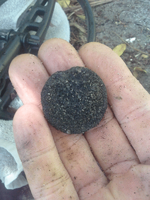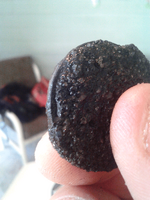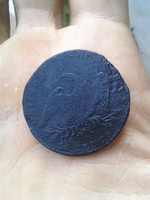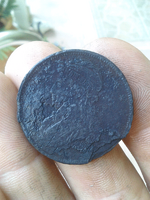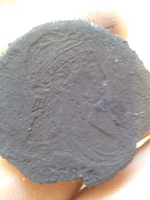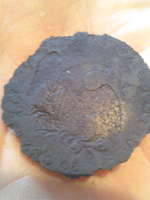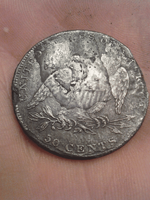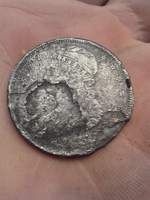djabend
Hero Member
- Dec 12, 2006
- 766
- 69
- Detector(s) used
- White's DFX 300 Sunray DX-1 probe/ XLT Sunray XL-1 probe
First I want to thank rtde3 for letting me try electrolysis on some of his Shark Pit cookie coins.
and for the shark tooth
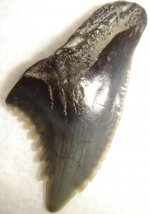
With It were 3 cookies
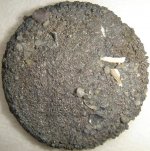
quarter sized these are usually standing liberty or barber quarters
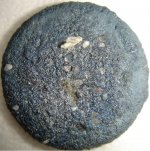
penny sized with that copper green crust, usually an indian head or wheat penny
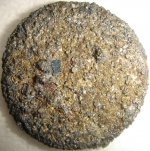
dime sized most likely a merc or a barber dime
first order of busyness was to make a contact point on each of the coins, bare metal for current to past through
I accomplished this in short order with a dremel and dentist pick.
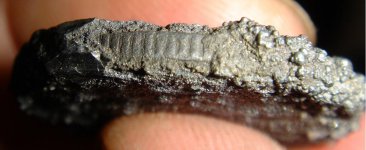
quarter
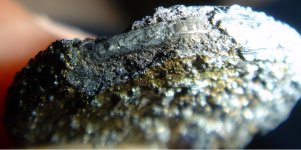
dime, I could tell delamination was going to be an issue here if i was not careful more on that later
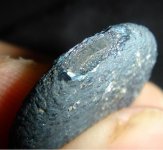
penny
Once cleaned it is time to make your electrolyte solution(I use vinegar for silver and baking soda for copper)
and hook up your power supply (I use 9V 300mA) copper anode for copper and in this case I was using a pull tab
anode for the silver (I found a use for them!)
The silver coins gave off a white substance when zapped. Something was leaching out of the crust.
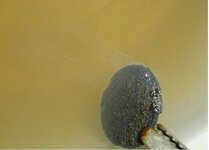
After a few hours off and on of treating the crust will start to soften.
From here the crust must be manually removed..... and here it gets tricky
The following pictures are not pretty
DELAMINATION- the coin comes apart in layers losing detail and if you are not careful the whole coin
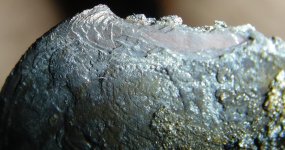
I was able to save the rest of the coin and get the date but much was lost
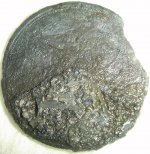
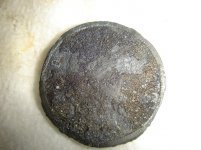
The dime was holding up better at this point and was probably the best preserved of the bunch
The penny...... we wont go there
I will post the finished pictures in the next post
What did I learn?
1.These coins are highly unstable due to what I believe is copper loss from up to 100 years in the water.
2.The coins are porous because of this and soak up water. The more they soak the more they can delaminate.
3.Go slower the coins aren't going anywhere
4.It really sucks when the edge snaps off a SLQ
5.rtde3 is the man!
6.Whites metal detectors are the best ( lol I am going to get it for putting that one in.... )
)
It was a great time seeing these old coins that come from such a cool place in person and being able to work on them.
rtde3, best of luck hunting the Shark Pit! HH,
Donny
and for the shark tooth

With It were 3 cookies

quarter sized these are usually standing liberty or barber quarters

penny sized with that copper green crust, usually an indian head or wheat penny

dime sized most likely a merc or a barber dime
first order of busyness was to make a contact point on each of the coins, bare metal for current to past through
I accomplished this in short order with a dremel and dentist pick.

quarter

dime, I could tell delamination was going to be an issue here if i was not careful more on that later

penny
Once cleaned it is time to make your electrolyte solution(I use vinegar for silver and baking soda for copper)
and hook up your power supply (I use 9V 300mA) copper anode for copper and in this case I was using a pull tab
anode for the silver (I found a use for them!)
The silver coins gave off a white substance when zapped. Something was leaching out of the crust.

After a few hours off and on of treating the crust will start to soften.
From here the crust must be manually removed..... and here it gets tricky
The following pictures are not pretty
DELAMINATION- the coin comes apart in layers losing detail and if you are not careful the whole coin

I was able to save the rest of the coin and get the date but much was lost


The dime was holding up better at this point and was probably the best preserved of the bunch
The penny...... we wont go there

I will post the finished pictures in the next post
What did I learn?
1.These coins are highly unstable due to what I believe is copper loss from up to 100 years in the water.
2.The coins are porous because of this and soak up water. The more they soak the more they can delaminate.
3.Go slower the coins aren't going anywhere
4.It really sucks when the edge snaps off a SLQ
5.rtde3 is the man!
6.Whites metal detectors are the best ( lol I am going to get it for putting that one in....
 )
)It was a great time seeing these old coins that come from such a cool place in person and being able to work on them.
rtde3, best of luck hunting the Shark Pit! HH,
Donny



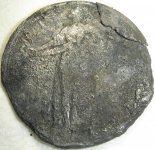
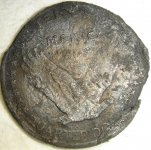
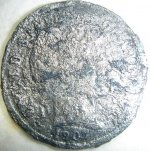
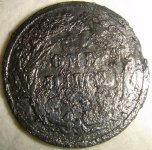
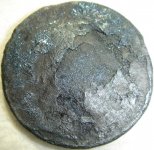
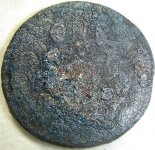
 If the only way to clean such saltwater finds is electrolysis, why do I not see Spanish coins looking like this after cleaning? They've been in the water much longer, after all.
If the only way to clean such saltwater finds is electrolysis, why do I not see Spanish coins looking like this after cleaning? They've been in the water much longer, after all. 
